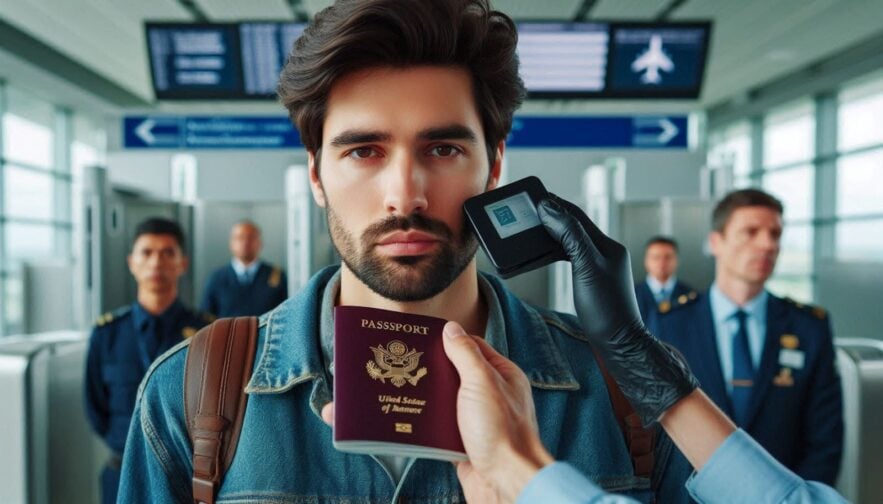VANCOUVER, British Columbia — As biometric border systems become standard across airports worldwide, failures tied to fake or poor-quality passport photos are on the rise. Amicus International Consulting has expanded its guidance on liveness detection and presentation attack basics, providing frontline staff, airlines, and travelers with deeper insight into how these technologies work, where they fail, and how to reduce unnecessary delays.
Biometric Systems at the Core of Border Management
Over the past decade, biometric systems have shifted from pilot programs to mandatory checkpoints. Major hubs in North America, Europe, Asia, and the Middle East now rely on face recognition to match live passengers against digital images embedded in passports. These systems are designed to accelerate border throughput, strengthen fraud prevention, and reduce reliance on manual inspection.
Yet with global adoption has come a new problem: increased detection failures when poor-quality or fraudulent photos are involved. According to international border authorities, seasonal spikes in false matches result in thousands of secondary inspections per month, often at the busiest airports. For legitimate travelers, these failures translate into missed flights, reputational risk, and, in some cases, temporary detention. Border agencies create bottlenecks and intensify workloads.
Why Passport Photos Fail Biometric Checks
Amicus research highlights several recurring factors behind photo failures:
- Low-quality images: Photos captured in non-certified environments often fail ICAO standards for sharpness, contrast, or background consistency.
- Outdated appearances: A ten-year passport may contain a photo that no longer resembles the traveler, especially after aging, surgery, or lifestyle changes.
- Digital manipulation: Edited or filtered images can introduce subtle inconsistencies.
- Intentional fraud: Fraudsters attempt to substitute photos, alter biometric pages, or exploit digital submissions.
- Hardware mismatches: Legacy chips embedded in older passports sometimes do not interface reliably with advanced biometric gates.
Amicus emphasizes that while some failures indicate fraud, many involve innocent oversights. The line between inconvenience and suspicion is often crossed because systems are designed to err on the side of security.
Understanding Liveness Detection
Liveness detection is the cornerstone of modern biometric security. Its purpose is to distinguish between a real, live person and a presented replica, such as a printed photo or digital display. Amicus explains that systems employ two categories of detection:
- Active liveness detection requires the user to perform actions such as blinking, smiling, or turning their head. Systems record micro-movements that prove a live presence.
- Passive liveness detection analyzes static images without requiring interaction, relying on texture analysis, light reflection, or depth mapping to identify fakes.
Amicus notes that while active methods are often more accurate, they can slow throughput and frustrate travelers. Passive methods, though faster, are more vulnerable to sophisticated presentation attacks. Most border agencies deploy a combination of both, layering automated checks with officer review.
Presentation Attacks and Emerging Threats
Presentation attacks occur when someone attempts to deceive a biometric system with something other than their real face. Common tactics include:
- Printing high-resolution passport photos and holding them to the scanner
- Displaying images on a phone or tablet
- Wearing masks or prosthetics designed to mimic another person
- Using AI-driven deepfakes to alter live video streams
Amicus warns that the sophistication of these attacks is increasing. Where once a flat photo could be easily detected, fraudsters now experiment with hyper-realistic silicone masks or video injection techniques. These developments require constant upgrades in both technology and staff training.
ICAO Photo Standards and Compliance Gaps
The International Civil Aviation Organization (ICAO) sets global standards for passport photos, requiring neutral expressions, consistent backgrounds, specific lighting, and no digital alterations. Despite this, many travelers continue to submit photos that fail to meet requirements, often because they rely on automated apps or uncertified providers.
Amicus stresses that even minor deviations like smiling, tilting the head, or wearing non-compliant eyewear can reduce biometric accuracy. Governments are urged to improve public education, while travelers are encouraged to use certified photography providers.

Case Study 1: Travel Agency Improves Client Success Rates
A European travel agency found that nearly 15 percent of its clients experienced biometric delays linked to poor passport photos. After consulting Amicus, the agency updated its client handbook, recommending certified providers and encouraging early passport renewal for clients with significant appearance changes. Within six months, biometric failure reports dropped by more than half.
Case Study 2: Airline Introduces Preflight Photo Verification
A Middle Eastern airline implemented optional preflight passport photo verification during online check-in. Passengers were prompted to upload their passport photo for a basic biometric check against their booking details. This allowed the airline to identify potential issues before travelers reached the airport. The initiative, adapted from Amicus’ guidance, reduced boarding delays and earned positive regulatory recognition.
Case Study 3: Border Agency Flags Deepfake Attempt
At a North American airport, a border agency detected an attempted deepfake presentation attack in which a fraudster injected a manipulated video into a biometric stream. Officers had been trained on liveness detection basics through Amicus workshops, allowing them to identify inconsistencies and escalate appropriately. The traveler was detained, and the case is now part of an international intelligence sharing program.
Case Study 4: Consulate Educates Dual Nationals
A South American consulate distributed Amicus’ plain-language biometrics guide to dual nationals after repeated cases of mismatched data triggered false fraud flags. The outreach campaign prevented dozens of detentions, as travelers renewed passports early and corrected mismatched records before traveling.
Traveler Checklist: Ten Steps to Avoid Biometric Delays
Amicus has expanded its traveler guidance into a ten-step checklist for pre-departure self-checks:
- Confirm that your passport has at least six months of validity.
- Renew early if your appearance has changed significantly.
- Use certified photo providers when applying for or renewing passports.
- Verify that your name and details match exactly across tickets, visas, and documents.
- Avoid digital filters, edits, or low-quality scans when submitting passport photos.
- Carry supporting documents (e.g., marriage certificate for name changes).
- Ensure passport chips are undamaged; replace passports with faulty chips.
- Review biometric system requirements for your destination country.
- Check airline apps for optional preflight document verification.
- Arrive early at the airport during peak travel seasons to allow time for secondary checks.
Balancing Security With Privacy
As biometric systems expand, Amicus also addresses privacy concerns. Travelers increasingly worry about how facial data is stored, shared, and retained. Amicus encourages governments to publish transparent policies, limit data retention periods, and allow passengers to understand how their information is used. Airlines and airports are advised to communicate when biometric data is collected clearly and under what authority.
Training Frontline Personnel
Amicus highlights that technology alone cannot ensure security. Border officers, airline staff, and consular workers must understand how biometric systems function, what liveness detection entails, and how to interpret false failures without assuming criminal intent. Training reduces unnecessary detentions and promotes fair treatment of travelers.
Future Technologies and Risks
Looking forward, Amicus identifies several developments shaping the biometric landscape:
- AI-enhanced fraud detection: Systems that learn from global fraud attempts to improve accuracy.
- Blockchain-based digital identities: Decentralized credentials resistant to tampering.
- Next-generation deepfake detection: AI tools that spot synthetic video in real time.
- Expanded interoperability: Greater alignment between biometric systems across jurisdictions.
Amicus warns that fraudsters will adapt, experimenting with ever more sophisticated attacks. The key to resilience is constant updating of both technology and human processes.
Conclusion: A Shared Responsibility
Amicus International Consulting stresses that preventing biometric failures is a shared responsibility. Governments must enforce ICAO standards, airlines must integrate pre-departure checks, consulates must educate communities, and travelers must take personal responsibility for ensuring their documents are compliant.
The firm emphasizes that lawful travelers should not fear biometric systems but instead view them as part of a modern travel environment. By preparing properly, travelers can reduce the risks of delay, detention, or mistaken suspicion.
About Amicus International Consulting
Amicus International Consulting advises global clients on lawful identity management, biometric compliance, and cross-border travel security. The firm guides governments, airlines, corporations, and travelers, ensuring that identity systems remain secure, fair, and efficient.
Contact Information
Phone: +1 (604) 200-5402
Email: info@amicusint.ca
Website: www.amicusint.ca



